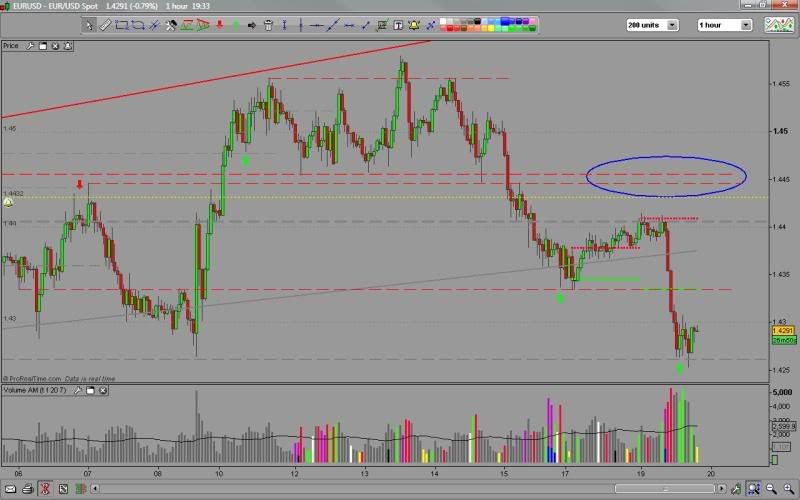
The easiest way to do this is to use the candle wicks from the last time price was at this level so that the tip of the wick and the candle body become your target zone, if one exists last time price was at the level.
My preferred method results from using the top down analysis described in the last post. I often end up with these ranges defined for me by levels from different time frames by the time I get down to the 1 hour chart.
In the EURUSD chart above, my target area 14446-14455 circled in blue, was defined by the lower, thinner 1 hour s/r level and the upper, thicker 4hour level. An entry any where between these two would have made me happy. Unfortunately a poor news report on top of existing economic pressure made price fall much earlier.
In the EURUSD chart above, my target area 14446-14455 circled in blue, was defined by the lower, thinner 1 hour s/r level and the upper, thicker 4hour level. An entry any where between these two would have made me happy. Unfortunately a poor news report on top of existing economic pressure made price fall much earlier.
Wider ranges defined by multiple levels can be more difficult to deal with, and a concious decision has to be made as to whether an entry is better at the front of the range or the back. There are many theories on this, some say the front of a range is better when entering a trend trade and the back is better for counter trend. Similarly the front may be better if you are using a flat pattern such as a bucket bottom. Momentum and price action needs to be considered as well so I suggest you study this and come up with your own ideal combinations.
The other important point is that I almost always make an adjustment to my entry to take into account the spread and a small price shortfall. So when I say the back of a range it will usually be a few pips away.
No comments:
Post a Comment